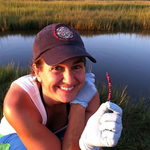
WILBANKS Elizabeth
- Department of Ecology, Evolution, and Marine Biology, University of California, Santa Barbara, Santa Barbara, United States of America
- Biofilms, microbial mats, Bioinformatics dedicated to microbial studies, Biology of understudied microbes (viruses, archaea, ...), Genomic and evolutionary studies, Microbe-microbe and microbe-host interactions, Microbial biogeochemistry, Microbial biogeography, Microbial (eco)physiology and metabolism, Microbial symbiosis
- recommender
Recommendations: 0
Reviews: 0
Areas of expertise
Research in the Wilbanks lab seeks to understand the structure and activity of natural bacterial and archaeal populations with a focus on metabolism and trophic relationships. A theme in our research is to examine the spatial context of microbial interactions in marine aggregates and biofilms, and the effect of such interactions on the population dynamics and evolution of bacteria and archaea. Our study systems currently include phototrophic salt marsh aggregates (the green and pink “berries”), marine snow and particulate organic carbon, and the microbiome of giant kelp (Macrocystis pyrifera). We find the tools best suited to the questions at hand – employing a range of technologies from system-wide, data-driven approaches (e.g. (meta)genomics, bioinformatics) to microscopy and microscale geochemistry.